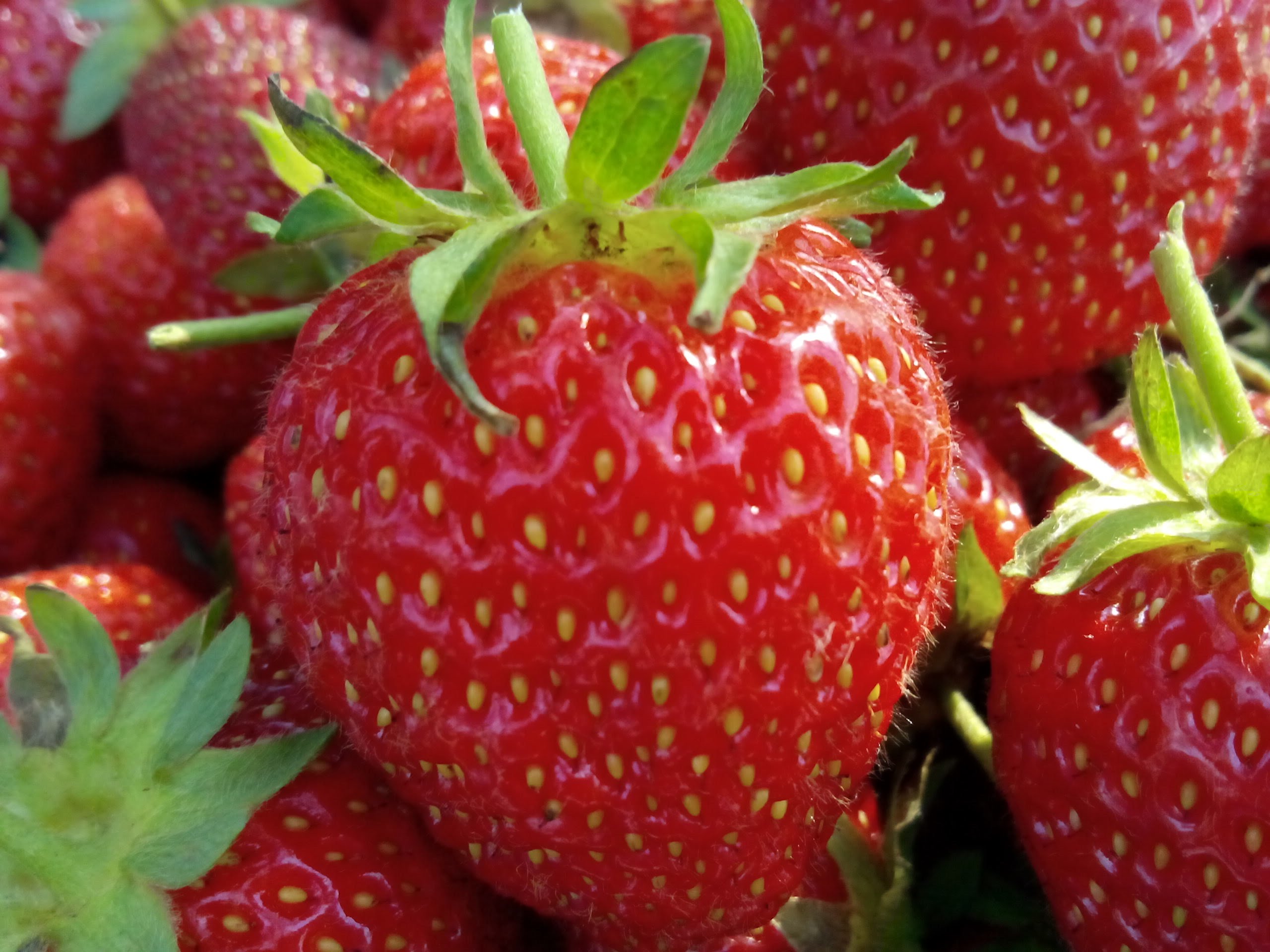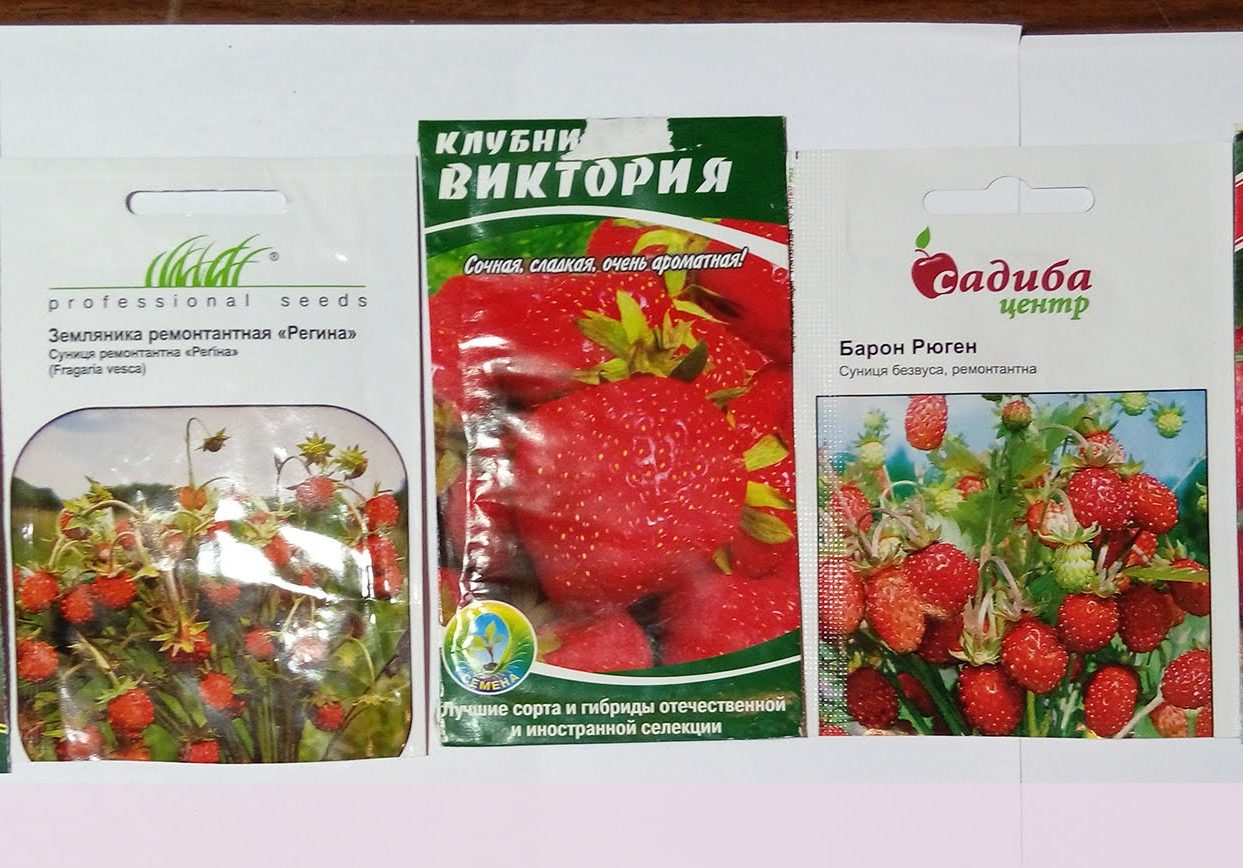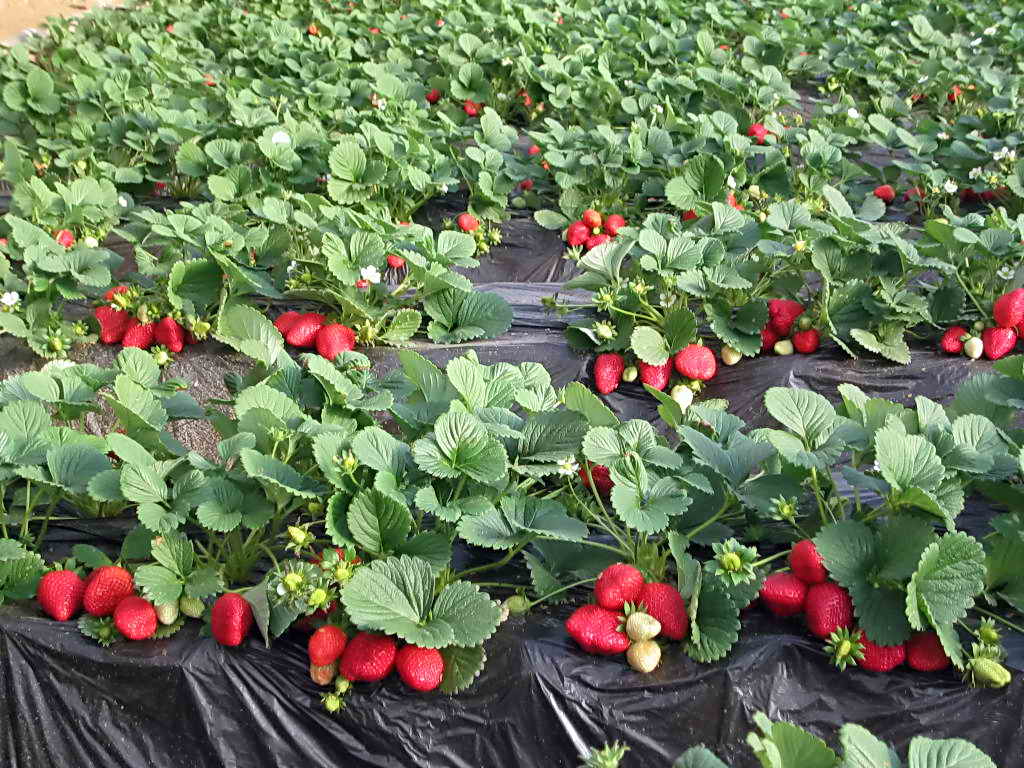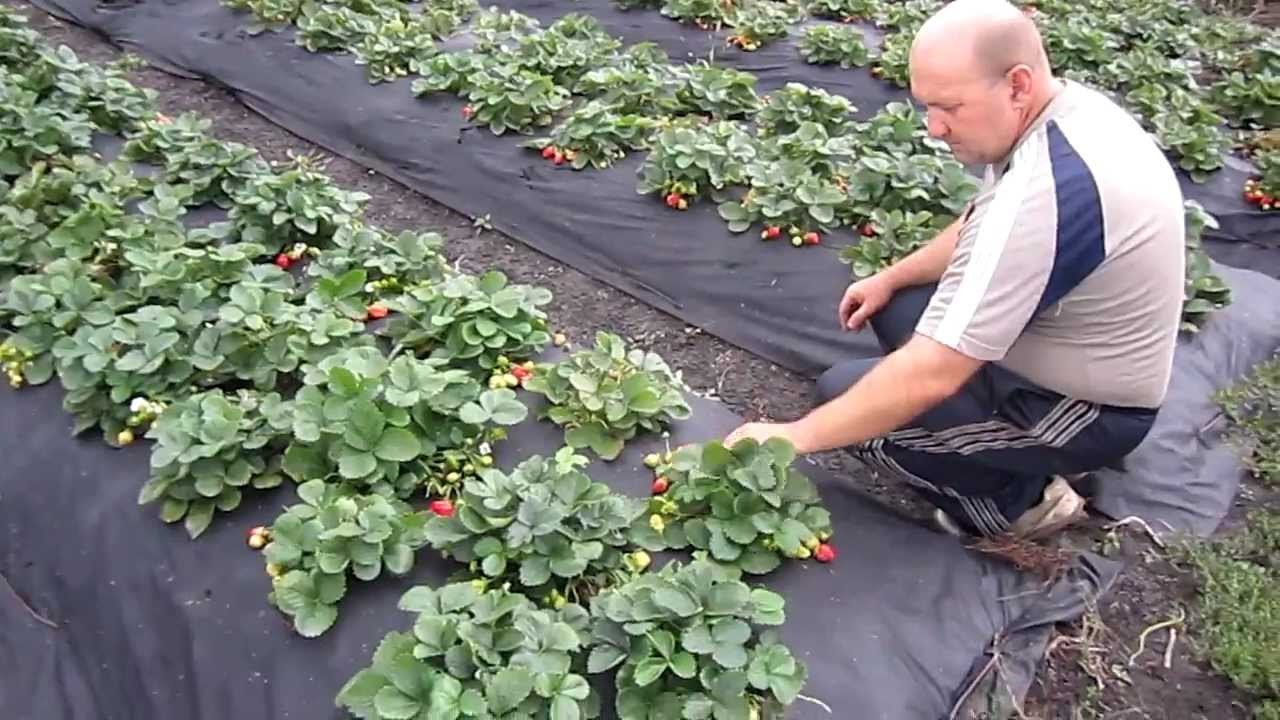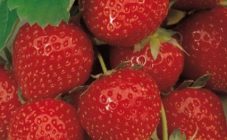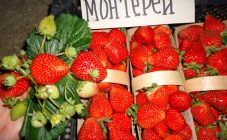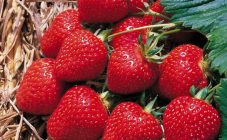Content:
More than twenty years ago, breeders in England bred a large-fruited strawberry variety called Queen Elizabeth. This berry differs in that, with the correct application of the rules of agricultural technology, its fruits can reach a weight of 85-90 grams.
Description of the subspecies of the variety
There is a version that the outstanding English breeder Ken Muir became the creator of this variety. Accordingly, England is considered the birthplace of the berry. But these are only assumptions and there is no factual evidence for this information.
The second subspecies was bred by the Russian scientist Mikhail Kachalkin, who was attracted by the large-fruited and yield of the variety, therefore, samples were taken for selection.
Both subspecies are almost the same, but there are still some differences:
- The English variety is dependent on the length of daylight hours, it needs sunlight for at least 8 hours. The second variety is not capricious for lighting, so its yield is much higher;
- representatives of the first grade have larger bushes and leaves;
- there are tint differences in the color of young leaves: young shoots of Queen Elizabeth are light green, Queen Elizabeth 2 is darker;
- the first variety throws out a lot of lateral antennae, while the second no more than 5 with several rosettes on each, if the peduncles are not removed from the bush;
- peduncles of the English variety grow at the same height and are always erect. In the second subspecies, they are much lower and more often fall to the ground due to increased productivity.
Both subspecies differ from their relatives in abundant yield: one bush can bring up to 1.5 kg of berries, per hectare, the average is 350 centners. At the same time, the mustache that grew in July is already bearing fruit again in August.
Strawberry Queen Elizabeth easily tolerates frost. To get an early harvest, the beds should be insulated for the winter.
Pros of varieties:
- even and large (up to 50 g) fruits;
- taste is in no way inferior to appearance;
- with cold snaps, the size of the berries becomes larger (about 100 g) and the shape is slightly stretched;
- in summer, the taste of berries is brighter and honey-sweet;
- a big plus is the density of the fruit, which ensures the possibility of transportation and long-term storage. During heat treatment (no matter high or low temperature) they do not lose their shape.
Cons of varieties:
- The English version of Elizabeth has the following disadvantage, and that is noticeable only in comparison with Elizabeth 2 - its fruiting is less and, accordingly, the yield is also.
- the disadvantage of strawberries of the Elizaveta 2 variety was its ability to reproduce. Here you should choose: either to harvest the fruits, or to hatch young seedlings, since it is impossible to do this at the same time.
Growing berry culture
In order for strawberries to produce a good harvest of delicious berries, you need to familiarize yourself with the specifics of growing this hybrid.
Seed propagation
The process of obtaining strawberry seedlings by sowing seeds is quite laborious, but it gives its positive results. In order for everything to work out, you need to follow some rules:
- it is better to plant the crop at the end of January, but additional lighting is needed for good germination. If this is not possible, then planting should be done in the last days of February or at the beginning of March;
- containers should be small, about 12 cm deep will be enough;
- for planting, prepared earth is used, with which the containers are filled;
- berry seeds germinate well in bright light, so you do not need to deepen them into the ground. It is enough to distribute the seeds over the surface of the moistened soil and press down a little;
- an important condition for better germination is the creation of a greenhouse effect. To do this, it is enough to cover the containers with the sown seeds with glass. Film is also suitable for this purpose.
The best place for containers is a brightly lit window. Every day, the greenhouse needs to be opened for 5-10 minutes for fresh air. In addition, the soil must be moist at all times. The easiest way to maintain humidity is by spraying with a spray bottle.
The appearance of a second leaf on a strawberry bush of the remontant variety Elizaveta 2 is a signal to dive seedlings into separate pots or cups. Watering requires special care, since young shoots can very easily die if excessive moisture is present, from which the outlet turns black. For beneficial development and growth, very bright lighting is necessary and, if there is little natural light, it is imperative to take care of artificial lighting with the help of special lamps.
A couple of weeks before planting seedlings in open ground, it is worth doing the procedure for hardening the plants. It is done gradually and from the very beginning: the first stage is a simple airing of the sown seeds, and later - taking the seedlings out into the open air, gradually increasing the time the pots stay outside. Strawberry seedlings will be ready for transplanting in 4 months.
Both varieties have identical farming techniques for breeding from seeds. Young plants bear fruit closer to autumn.
Organization of strawberry beds
The berries of the royal varieties in question, as well as the Catherine strawberries, are not capricious and do not require special conditions. They can grow in all regions, both in the open field and in greenhouses, including panel ones. In addition, you can grow these berries in balcony conditions, if the necessary conditions for yield are observed. Neutral loamy, moderately moist soils are favorable.
The planting period is quite long: spring-autumn. But it is preferable to do this from the end of July to the beginning of August, since the culture needs time to take root and prepare for wintering. If the landing took place only in the fall, then shelter for the winter must be provided.
Preparing a place for strawberries needs to be done in another 1-1.5 months:
- choose a plot with good sunlight (since this is the main condition for productivity);
- the soil requires preparation: fertilizer is applied in the form of a mixture of humus and peat in a ratio of 50:50, the site is dug up and stands untouched for about a month so that the introduced components reach the desired condition.
After a year or two, the berry becomes noticeably smaller - this means that the bush is aging, so you can plant young growth annually to gradually renew the garden.
Postplant care
In order for a variety with gradual fruiting (remontant) to reach its full potential, constant care of the plants is required. Plant care consists of 6 main procedures:
- Frequent watering provokes the appearance of weeds, which must be removed, at the same time loosening the soil. In modern agricultural technology, mulching is now often used, which simplifies the laboriousness of care after watering.
- Timely application of dressings (potash and nitrogen) to avoid depletion of the bushes during the period of active summer growth and harvest.
- In order for the strawberry fruit to be of the correct size, it is recommended to remove the early spring flowering.
- The entire growing season should be carried out preventive measures related to diseases and possible pests. The Queen Elizabeth 2 variety is more resistant, but also requires care in this direction.
- Both varieties bear fruit productively for the first two years, during this period the berries are of a standard size, later they become smaller. It follows from this that the garden bed must be updated every 2 years.
- Preparing for hibernation: removing leaves and sheltering the beds.
If it is not possible to grow on the ground, then portable containers will do. These varieties are great for greenhouse cultivation in all types of greenhouses.
What feeding to use
Studying the features of these varieties, it was determined that they have a long fruiting period. This means that the strawberries need a systematic feeding. It is during the period when the bushes are actively bearing fruit that the plants need weekly feeding with organic fertilizers. In the spring, it will not be superfluous to add fertilizers of ammonia and nitrogen composition, as well as phosphoric acid and urea.
Many gardeners, trying to achieve large fruits, remove the first flowers and add organic matter to reinforce the bush. The next harvest (after the first removed) will be better if the beds are fed with diluted cow dung (1:10) with the addition of ash.
Watering frequency
Strawberries require frequent watering, but at the same time they are afraid of waterlogging. Care should be taken to keep the ground moist (but not wet) to a depth of about 5-6 centimeters. The frequency of watering should be at intervals of 1-2 days with different intensities.
To avoid roots getting wet, soil mulching is often used with straw and sawdust. Now the practice of planting bushes on a black film.
Weeds
For all the unpretentiousness of Queen Elizabeth, weed control is inevitable. You can try to simplify this task for yourself with the help of different technologies: mulching with black film, mechanical removal, or folk remedies (salt, etc.).
Soil loosening
Each watering or rain compacts the soil in the garden, so it must be loosened. This helps to strengthen the root system.
In the process of preparing for winter, it is also necessary to loosen the roots, from which all ground foliage has been previously removed. Additional cover with branches of other plants or materials is recommended. Experienced gardeners advise to water well on the eve of the arrival of cold weather.
What diseases and pests should be feared
Queen Elizabeth is distinguished by disease resistance and endurance when meeting pests. The main danger can be called gray rot, which appears when waterlogged or in rainy weather. For prevention, the following drugs are used: phytosporin or integral.
Not looking at her good looks, Queen Elizabeth is not interesting to insects.In this regard, when growing, there is no need to use chemicals. Common tobacco dust sprinkled on foliage will help from the invasion of a typical strawberry weevil pest.
Strawberry variety Queen Elizabeth took a leading position in the following indicators:
- disease resistance and pest resistance;
- increased yield and size of berries;
- by the quality of taste and vitamin content.
The varieties are recommended for both industrial and amateur breeding and cultivation in all regions of the country. As with any other plant, strawberries are tricky. But it's worth it, and over time, a honey-sweet reward from your garden will follow, which certainly cannot be compared with store-bought delicacies.
